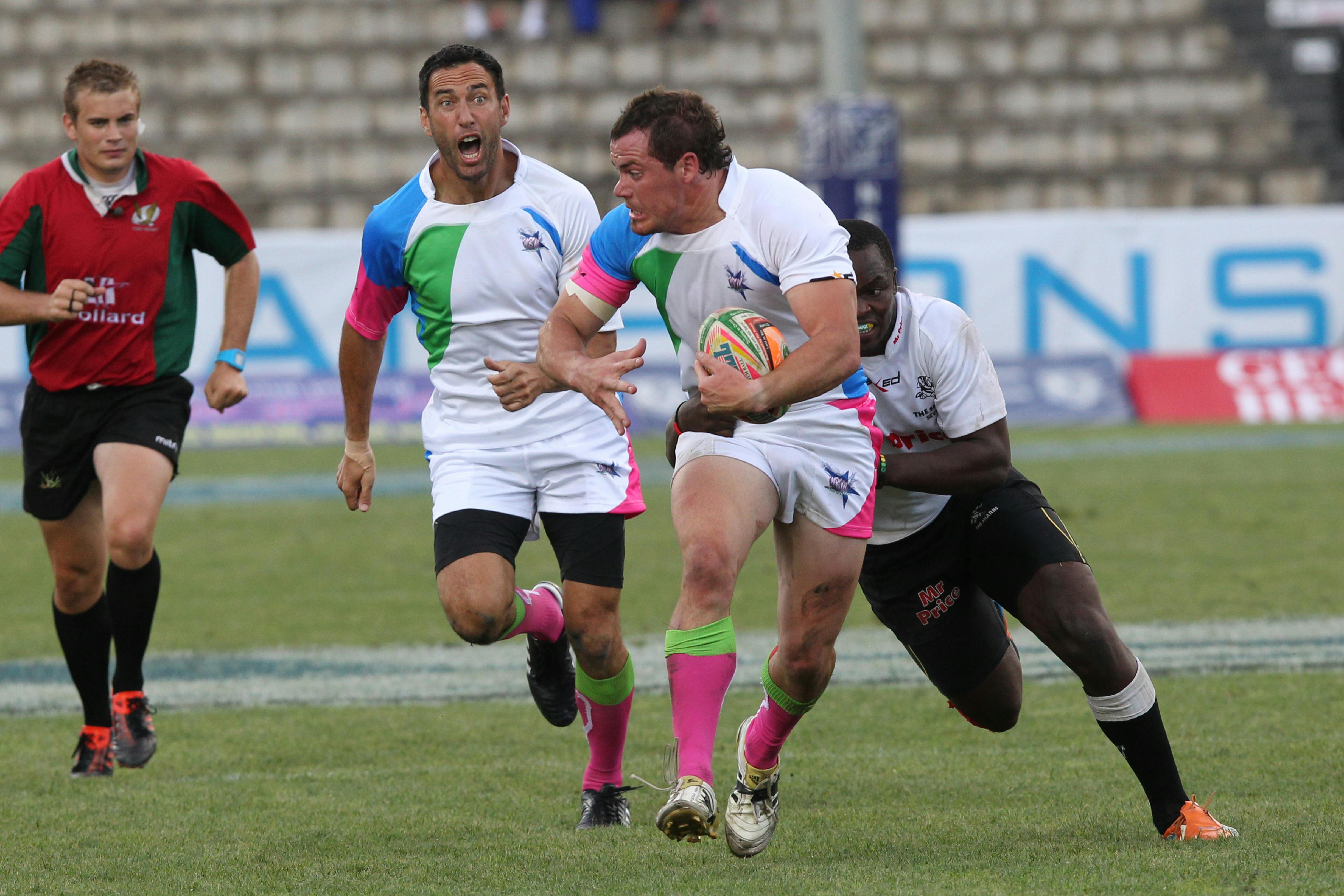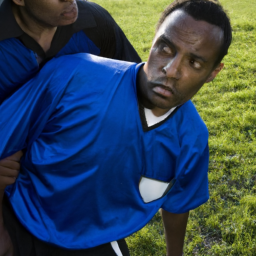A soccer tackle is an essential defensive skill used in the sport of soccer. It involves a player using their body to take the ball away from an opponent, either by using their feet or their body weight to make contact with the ball carrier. It is a physical move that requires considerable strength and agility, and it can be a crucial part of any team’s overall strategy.A soccer tackle is a defensive move used by a soccer player to take control of the ball from an opposing player. It involves the use of the feet, legs, and body to wrap around and bring down the opposing player in possession of the ball. A successful tackle requires good timing and balance, as well as strength and agility.
Soccer Tackle
A soccer tackle is a defensive move used to dispossess an opposing player of the ball. It is an important skill for any soccer player, as it helps prevent the opposing team from scoring. A successful tackle requires timing, accuracy and good technique. To execute a tackle, a player must approach the ball-carrier at an angle, get close enough to make contact and then use their body to win possession of the ball. The player should also be aware of their surroundings and ensure that they do not cause any harm to other players in the process. A good tackle can be both effective and safe, as long as it is executed correctly.
It is important for players to remember that tackling is a last resort when defending against an attack. Players should first attempt to intercept passes or block shots, rather than diving into tackles. If a tackle must be made, however, players should always aim to win the ball cleanly and with minimal contact. This helps ensure that both players remain safe and that play remains fair.
Finally,soccer tackles are also subject to rules set by governing bodies such as FIFA. For example, dangerous tackles such as sliding tackles from behind may result in a yellow card or even a red card depending on the severity of the challenge. It is therefore important for all players to understand these rules in order to avoid any disciplinary issues during matches.
The Different Types of Soccer Tackles
Soccer is a physical game, and one of the most important skills to master is tackling. Tackling is an essential part of the game, as it is used to gain possession of the ball. There are five main types of soccer tackles, each with their own strengths and weaknesses.
The first type is a slide tackle. This type involves sliding either feet-first or body-first towards the ball in order to win possession. Slide tackles can be effective when used correctly, but they can also lead to fouls if done recklessly or too aggressively.
The second type is the standing tackle. The standing tackle involves standing upright and using your body and arms to shield the ball away from an opponent. This technique requires precise timing and positioning in order to be successful, as it can easily lead to a foul if done incorrectly.
The third type is the block tackle. The block tackle involves using your body to block off an opponent’s path towards the ball by positioning yourself between them and the ball. This tactic requires good anticipation and strong positioning in order for it to be successful.
The fourth type is the two-footed tackle. The two-footed tackle involves using both feet simultaneously in order to win possession of the ball from an opponent. This technique requires good timing and agility in order for it to be successful, as it can easily lead to a foul if done incorrectly or too aggressively.
Lastly, there is the shoulder challenge. The shoulder challenge involves using your shoulder or upper arm in order to dislodge an opponent’s grip on the ball by pushing them away from it while maintaining control over it yourself. This technique requires good strength and balance in order for it to be effective, as it can easily lead to a foul if done too aggressively or carelessly.
Each type of soccer tackle has its own advantages and disadvantages depending on how they are used on the field. It is important for players to understand these different techniques so that they can use them effectively during matches in order to gain possession of the ball for their team’s advantage.
How to Execute a Proper Soccer Tackle
Tackling is an important part of soccer and one of the main skills that a player must master. There are several techniques for tackling in soccer, but the most important thing to remember is that it must be done safely and effectively. Here are some tips on how to execute a proper soccer tackle:
1. Be Aware of Your Surroundings – When you’re about to make a tackle, it’s important to be aware of your surroundings. Make sure you know where your teammates and opponents are located on the field, as well as any potential obstacles.
2. Approach with Balance – As you approach an opponent, it’s important to stay balanced. Make sure your feet are shoulder-width apart, with one slightly ahead of the other, so you can move quickly and easily in any direction.
3. Keep Your Eyes Focused – Make sure you keep your eyes focused on the ball at all times while making a tackle. It might be tempting to look away or focus on something else, but doing so could result in poor technique or even injury if not done properly.
4. Make Contact with Your Body – When making a tackle, make sure you make contact with your body rather than just using your feet or hands. This will help ensure that the contact is strong and that you have full control over the ball and opponent after making the tackle.
5. Stay Low – A crucial part of tackling is staying low during contact with an opponent’s body or ball, as this will give you more stability and control over the situation as well as help protect yourself from injury.
6. Release Quickly – Once you’ve made contact with an opponent’s body or ball, it’s important to release quickly so that they don’t gain any advantage from it or become injured by prolonged contact with your body weight or momentum from tackling them too hard or too late into the challenge for possession of the ball..
The Benefits of Knowing How to Properly Tackle in Soccer
Tackling is an important skill in any sport, especially soccer. Knowing how to properly tackle can help a player control the ball, create scoring opportunities, and defend against opponents. It is essential for every soccer player to learn the techniques of tackling and how to use them effectively in order to maximize their performance on the field. Here are some of the benefits of knowing how to properly tackle in soccer:
One of the major benefits of mastering this skill is improved ball control. With effective tackling, a player can quickly gain possession of the ball from an opponent and maintain possession until they are ready to make a play. This allows them to maintain control over the game and keep their opponents on their toes. Additionally, knowing how to properly tackle also helps a player anticipate where the ball is going, giving them an advantage over their opponents who may not be as skilled at tackling.
Another benefit of being able to effectively tackle in soccer is that it can create scoring opportunities for your team. By winning possession quickly and accurately, you can move the ball upfield faster than your opponents, giving your team more time and space to create chances for scoring goals or earning free kicks. Furthermore, if you know how to properly position yourself when making tackles, you can often draw fouls from opponents which will give your team another chance at goal-scoring opportunities.
Finally, effective tackling also gives players an advantage when it comes to defending against opponents. When players know how to position themselves correctly before making a tackle and have good technique when executing it, they are less likely to be beaten by an opponent’s dribbling or passing skills. Additionally, if players are aware of their surroundings when making tackles they can make sure that they don’t give away any unnecessary free kicks or penalties which could hurt their team’s chances of winning.
In conclusion, learning how to properly tackle in soccer has many benefits for both individual players and teams as a whole. Not only does it improve ball control and create scoring opportunities but it also gives players an advantage when defending against opponents which can help them win matches more easily. As such, mastering this skill is essential for any serious soccer player who wants to reach their full potential on the field.

Understanding the Risks of an Improper Soccer Tackle
Tackling is a critical part of soccer, and when done correctly, it can help prevent serious injury. However, when tackles are performed improperly, they can result in significant injuries for both the tackler and the player being tackled. It is important to understand the risks associated with improper tackling so that players can take steps to avoid them.
One of the most common injuries resulting from an improper tackle is ligament sprains and tears. When a player attempts a tackle without proper technique or strength, their leg can be overextended, causing the ligaments in their knee or ankle to become stretched or torn. Ligament injuries can be extremely painful and require a significant amount of time for recovery.
Additionally, improper tackling techniques often lead to ankle sprains or fractures. When a player fails to properly plant their feet while making a tackle, they can twist their ankles in awkward ways that cause damage to the ligaments and bones in their ankles. These types of injuries can take weeks or even months for full recovery.
In addition to physical injuries, improper tackling techniques can also lead to mental anguish for both parties involved. After experiencing an injury due to an improper tackle, many players may develop feelings of fear or anxiety when playing soccer due to their past experience with injury. This type of psychological trauma can have long-term effects on a person’s mental health and well-being and should not be taken lightly.
Overall, it is important for all soccer players to understand the risks associated with improper tackling techniques so that they can take steps to avoid them. By following proper technique and staying focused on safety at all times during practice and game play, players will be able to reduce their chances of experiencing serious injury due to an improper tackle.
Safety Precautions When Tackling in Soccer
Tackling in soccer is a necessary part of the game, but it can be dangerous if done incorrectly. To ensure the safety of all players on the pitch, it is important to follow a few safety precautions when tackling.
First and foremost, players should always wear the proper protective gear when playing soccer. This includes shin guards, cleats, and padded gloves. All of these items help protect players from injury while they are on the pitch.
Second, players should always adhere to the rules of fair play. It is important for all players to respect one another and play safely. Tackles should be executed with respect for both the player and ball at all times. No player should attempt to hurt or injure another player with a tackle, as this could result in serious injury or even death.
Third, it is important for players to practice proper technique when tackling. Players should keep their feet on the ground at all times, and keep their center of balance low by bending their knees slightly. This will help them stay in control and avoid any accidental contact with other players or objects on the field that could cause injury.
Finally, it is important for coaches to ensure that all players are familiar with these safety precautions before allowing them to participate in tackling drills or games. Coaches should also provide clear instruction about how to properly tackle and ensure that all players understand the rules of fair play before allowing them onto the pitch. By following these steps, coaches can help reduce the risk of serious injury associated with tackling in soccer.
Is a soccer tackle similar to the position or role of a cam player in soccer?
In soccer, a tackle is a defensive move used to dispossess an opponent of the ball. On the other hand, a CAM player, short for “central attacking midfielder,” holds a strategic position on the field, responsible for creating scoring opportunities. Understanding the term “cam” is crucial for recognizing the vital role this player has in a team’s offensive tactics.
Teaching Children the Proper Way to Tackle in Soccer
Teaching children the proper way to tackle in soccer is an important responsibility for any coach. It is important that coaches understand the importance of teaching proper tackling technique as it helps to ensure the safety of all players on the field. Proper tackling technique also helps to improve a player’s overall performance and ability to defend against an opposing team. In order to properly teach children how to tackle in soccer, coaches must first explain the fundamentals of the sport and why tackling is necessary.
Coaches should emphasize that tackling should only be used when absolutely necessary, and should never be used as a way of intimidating or hurting opponents. Coaches should also stress the importance of using proper technique when tackling, such as keeping their body in a low position with their feet firmly planted on the ground, arms extended and head up. This will help them stay balanced while they make their tackle and help them maintain control over their opponent.
When teaching children how to tackle, it is important for coaches to provide plenty of practice time so that players can get comfortable with the technique before using it in a game situation. Coaches can start by having players practice on each other, gradually increasing speed and intensity as they become more comfortable with the technique. Coaches should also demonstrate proper tackling technique in slow motion so that players can really understand what they are supposed to do when they go into a tackle.
Finally, coaches should encourage players to take responsibility for their own safety by being aware of their surroundings and using proper technique when tackling an opponent. Coaches should also stress that if a player does not feel comfortable making a tackle then they should always communicate this with their teammates or coaches so that an alternative solution can be found. Teaching children how to tackle safely and correctly is essential for any soccer coach and will help keep all players safe while still allowing them to compete at a high level.

Conclusion
A soccer tackle is an essential defensive skill in soccer. It is a physical move that involves using one’s body to force an opponent off the ball and out of possession. A successful tackle not only defends the ball, but also prevents the player from progressing further up the field. However, a poorly executed tackle can lead to a foul and cost your team a penalty or even a goal.
In order to be successful at tackling, players must practice proper technique and timing. This includes making sure their feet are in line with their hips when initiating contact, ensuring they wrap their arms around their opponent’s torso or waist, and keeping their head up to stay aware of their surroundings and potential threats.
By learning and practicing the fundamentals of tackling, players can become more effective defenders on the field. With this knowledge, they will be able to make better decisions during games which may lead to more successful outcomes for your team.
The ability to make smart tackles is an important component of any successful soccer player’s arsenal, so it is important for players to practice tackling regularly in order to hone their skills and become better defenders on the field.

